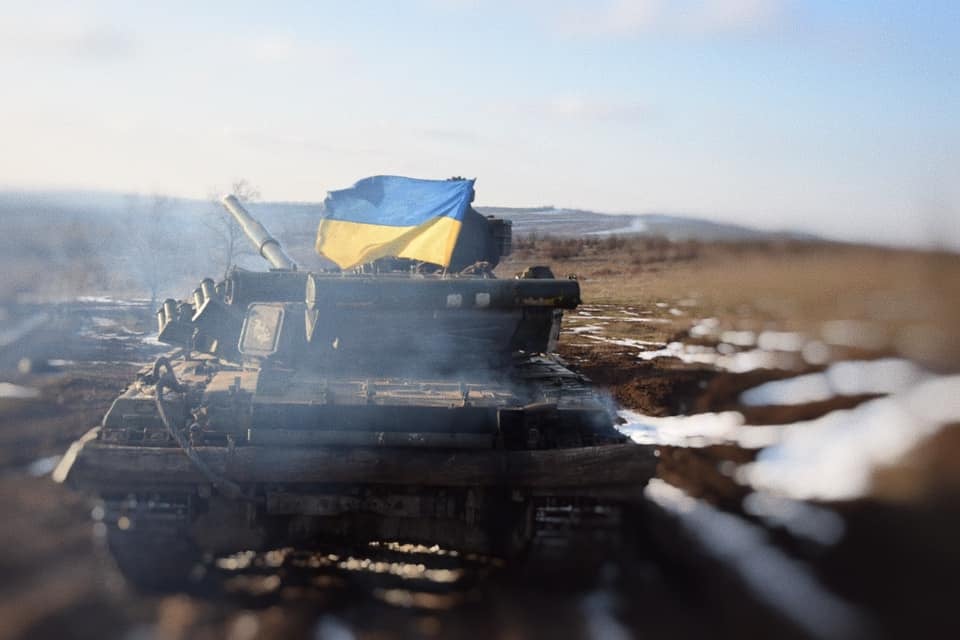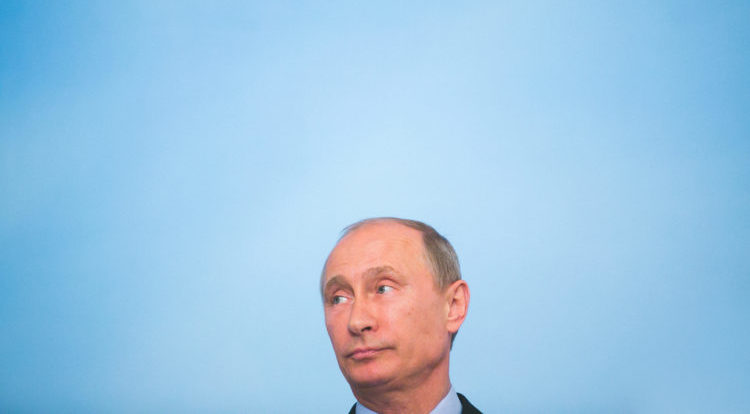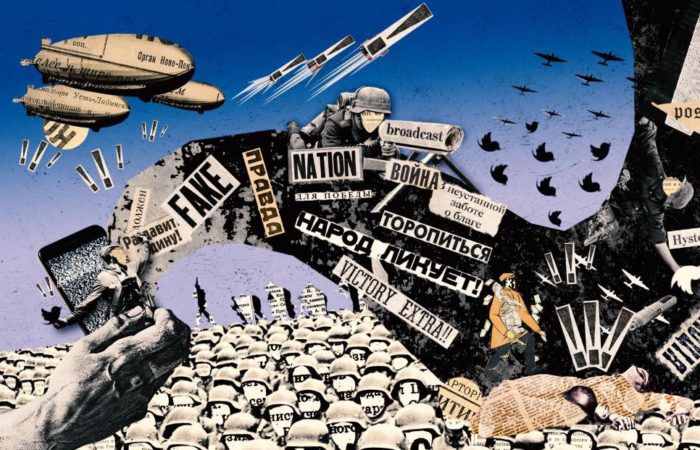European security has greatly deteriorated in the last months. Europe is experiencing a Russian-induced energy and migration crisis. Belarus is in the process of being integrated into the Russian Federation, potentially losing its independence and sovereignty in the months to come. Russia is increasing its military presence in both Belarus and along the Ukrainian border.
The Russian Hybrid War against Georgia, Ukraine, and Belarus is continuing unabated. All three are being destabilized from within through the combined use of military and non-military means. We have seen massive demonstrations in Kazakhstan turn violent and being put down with the combined efforts of CIS. Ukraine itself has experienced massive cyberattacks which most believe to originate in Russia.
Additionally, its narrative and messaging have become increasingly belligerent. The USA is being blamed for staging “color revolutions” worldwide to destabilize Russia and its allies (the CIS). On December 16, Russia published a draft treaty (USA) and agreement (NATO) to ensure the “security of the Russian Federation”, demanding NATO to not only stop further “expansion,“ but also reverse some of its development since 1997.
Considering the rhetoric since then, the documents must be understood as ultimatums.
Both the diplomatic sphere and the information space are ripe with speculations that Russian may invade Ukraine. We have seen leaked plans, intelligence on troop movements, military exercises, and possible false flag operations. An increase in disinformation narratives laying the foundation for a military operation has been documented. We see a great number of analytic works on possible scenarios, objectives, and consequences. And much more.
Why there will be an escalation
In September 2020 I argued that the “Hybrid War did not start in 2014. The first out of five phases (shaping) started decades ago. It involved the dismantling of the Ukrainian Security and Defense Sector, the shaping of the information domain, preparation of the economic and political space, and more. The second (and active) phase of the Hybrid War started on 20 February 2014. The last three phases (crisis, resolution, and restoration of peace) lay still in the future.
That might be about to change. The information domain has turned frantic after a week of unsuccessful bilateral and multilateral meetings in Geneve, Brussels, Vienna, Moscow, and Kyiv.
The likelihood of further Russian aggression has increased. Not because Russia did not achieve any concessions, since these were never expected anyway.
[bctt tweet="The likelihood of a military escalation has increased because of the lack of political courage by the West. For the lack of the Churchills and the way too many Chamberlains." username="euromaidanpress"]
The lack of unity in the West has also been demonstrated. President Biden has stated that Russia would pay a "serious and dear price
" if it were to invade Ukraine while indicating that minor incursions might be treated differently. The credibility of the USA and the EU threat has consequently, been undermined.
Just as importantly, Russia is seen to be seeking a political solution to their “security concerns” without receiving any response from the West, justifying future actions.
The likelihood of a military escalation has increased because of the lack of political courage by the West. For the lack of the Churchills and the way too many Chamberlains
Why Russia will not invade Ukraine
As the threat of an escalation is rising, and many fear a full-scale invasion, it is important to remind ourselves about some of the key attributes of the Hybrid War.
It aims to utilize the protest potential of the populations, create fear, and foster inaction. It aims to confuse and manipulate.
Using disinformation, cyber-attacks, blackmail, provocations, fabrications, military deceptions, and other active measures, it creates a virtual reality that incites both Ukraine and the West into making the political decisions Russia wants without suspecting (or acknowledging) they are being manipulated.
In this context, virtual reality might very well be the worst-case scenario.
Nations do not wage war for war's sake but in pursuance of policy in which a better state of peace is the main objective.
Hence, it is essential to conduct war with constant regard to the peace one desires. Since Russia's war against Ukraine has never been formally declared and conventional warfighting is limited, Hybrid War is, therefore, far better designed to restore “peace” when the war is won than a conventional military campaign. The latter is bound to cause massive destruction, casualties and suffering.
The Hybrid War is designed to avoid a military confrontation with the West. Additionally, it is designed to ensure a cost-effective victory while allowing for a near peaceful coexistence.
The full-scale invasion will not take place because:
- Russia needs a huge force to both invade and occupy Ukraine. The latter will be the most demanding mission. More importantly, it needs to multiple the numbers by factor 3 to sustain operations over time. An occupation force can only be maintained through the cycle of
(1) operations,
(2) rest, followed by
(3) training/exercises in preparation for the next operational deployment. - If Russia becomes clogged down by the more than 500,000 Ukrainian partisans fighting in their rear, its Armed Forces will become committed to the occupation of Ukraine. This will increase the security risks elsewhere. More importantly, Russia runs the risk of the initial success turning into a strategic failure (ref Afghanistan) and with that, any hope for “Global Power” status.
- A full-scale invasion is in direct conflict with its long-term strategy. Russia needs Ukraine to become a “Great Power.” It is facing vast demographic challenges. It needs Ukraine’s defense industry. It needs a self-sustained Ukraine capable of taking care of its own population. It needs a well-functioning agricultural industry. It needs to secure a well-functioning country. A full-scale war is, therefore, counterproductive.
- Attacking Ukraine will stop its Nord Stream 2 project cold. Since the pipeline is not yet operational, any conventional warfighting in Ukraine is bound to damage the existing Ukrainian gas transmission system. The loss of energy security will force the West to intervene actively.
- A full-scale invasion will inevitably trigger the international community, which until now has done its uttermost to avoid being drawn into the war as an active part. After the last weeks of diplomatic efforts, the USA and NATO will either be forced to respond or stay forever irrelevant. The consequences and spillover effects of a full-scale war will be utterly unacceptable to Europe. NATO will have a conventional war at its borders in conflict with its strategic concept, triggering a massive migration crisis and destabilizing the continent. A full-scale invasion will trigger a new Cold War and an Arms Race, bringing the Russian economy under siege.
[bctt tweet="It is highly unlikely Russia will launch a full-scale invasion and an occupation of Ukraine. Not because it cannot be done – because it can – but because it’s not needed, it is counter-productive, costly, and extremely risky." username="euromaidanpress"]
What will Russia do?
We – and with that I mean Ukraine, NATO, the EU, intelligence services, analysts, and media – have been discussing possible scenarios since 2014. Most of them follow the same lines of thoughts.
Generally, they are limited to
- a full-scale invasion scenario (seen as less likely by most),
- occupation of anything east of Dnipro (possible, but not most likely), and
- a land corridor along the Sea of Azov (potentially to Transnistria) to ensure water supply to Crimea and cut Ukraine’s access to the sea (possible).
Most have one common problem. None discusses military options adjusted to Russia’s present strategy.
Few see the scenarios in connection with Russia’s past operations, its disinformation campaign, its diplomatic initiatives, or its legislative processes.
The presence of “peacekeepers” supported by a No-Fly Zone and possibly, a Maritime Embargo, will fundamentally change the security situation. A “humanitarian intervention” will put regular Russian forces on the ground and in the air, ready to punish the Ukrainian Armed Forces (for any provocation orchestrated by the Russian Armed Forces). This will have a huge psychological impact on Ukraine. Even more so since the West will find it very difficult to sanction Russia for adhering to the “responsibility to protect” (R2P) norm we have argued as the basis for our intervention operations (even though Russia has created the pretext for the operation).
So far, most indicators and warnings support this scenario.
Russia has increasingly focused its narrative on the “humanitarian crisis and Ukrainian atrocities” and the need for an intervention in Donbas. Ukraine is accused of assault on fundamental human rights and freedoms. The “Russian compatriots
” are (mainly) in Donbas after years of “passportification.” They already control part of Donbas. They have argued sending peacekeepers to Donbas. They argue for the need to resolve the humanitarian problems in Donbas. Russia argues that Ukraine is about to launch an offensive to retake Donbas. The list continues.
Russia would (according to its narrative) not be “undermining Ukraine’s territorial integrity” per se but simply acting in the spirit of “Responsibility to Protect” (R2P). It would of course be a lie, but not a bigger lie than the international community has already swallowed for years.
The presence of regular Russian forces in Donbas will make any (unlikely) military intervention by Ukraine’s international partners even more unlikely. Ukraine Armed Forces will be pushed back and “punished.” And since we will be unable to sanction Russia for its R2P operation, it might very well demonstrate our impotence in the face of open Russian aggression leaving NATO’s credibility in tatters.
The humanitarian crisis, the narrative, justification, diplomatic initiatives, and military design would fit perfectly into the Hybrid War design. The psychological impact will be immense. But then again, the hybrid war is all about the mind. That’s why we are presently so concerned, isn’t it?
What might help save the day?
“Insanity Is Doing the Same Thing Over and Over Again and Expecting Different Results.”
[bctt tweet="The question we need to ask ourselves after 8 years of conflict is this: have we at any point done anything that has surprised or worried Russia?" username="euromaidanpress"]
For us to succeed, we need a change of behavior. I would argue that we have acted according to the same script we use during most international crises:
- Statements of concern;
- Calls for dialogue and political solution;
- And of course, sanctions of limited scope and flexibility.
All of which has been a part of the Russian cost/benefit analysis.
At a time when facts and truth are challenged, there are still some universal truths. One of these is “Si vis Pacem, para Bellum” (If you want peace, prepare for war). This is the very core of deterrence. By raising the cost of a possible attack, we can help prevent Russia from escalating its ongoing war. This means:
- We need to continue helping Ukraine develop a strong, balanced Armed Forces. The Ukrainian Army has been modernizing; however, the country does not have the funds needed to achieve this objective quicker than in decades. The EU and the USA need, therefore, to provide Ukraine with a “Marshall Plan.” In the present situation, however, this is a long-term requirement.
- We need to provide Ukraine weapons it needs. Ukraine will fight with what it has, not what it would like to have. Our help can turn the fortunes around. In the article “How to make a Russian invasion of Ukraine prohibitively expensive,” Andriy Zagorodnyuk, former Minister of Defence argues that “Ukraine and the country’s partners should seek asymmetric answers to the formidable military challenges posed by Putin’s Russia. If Putin launches a full-scale operation, Russian forces will face a combined Ukrainian military of around 500,000 personnel including a considerable reserve contingent. [ ] While there is no time to supply Ukraine with complex weapons systems, there is a shopping list of items that could significantly raise the cost of a Russian invasion. The most expensive items on Ukraine’s short-term wish-list include portable air defense systems, anti-tank missiles, anti-ship missiles, and counter-battery radars. Drones of all kinds would be most welcome. Sniper rifles and anti-sniper equipment would also be extremely useful, as would large deliveries of night vision goggles, encrypted radio communication devices, and satellite communication devices.”
But there is another universal truth. Newton’s third law is called the law of action and reaction because it describes the direct connection between force and counterforce. Or to put it another way: every action triggers a reaction.
The West’s response to Russia’s war in Ukraine violates this “law.” Our reaction has not only been weak but also predictable. We do not want the conflict. We don’t want to become a party to it. We want a political solution to the war (which Russia has started to win). We hope for peace as we (again in conflict with established principles) prepare for peace.
Peace is, however, only possible when everyone wants it. War only requires the decision of one. Russia has become increasingly self-confident and belligerent during the last 15 years because the West has not responded with the required “counterforce.” Russia perceives both NATO and the EU as weak and has, therefore, escalated the confrontation to the point where we today are facing a security crisis of unparallel scale.Peace is only possible when everyone wants it. War only requires the decision of one.
The West, therefore, need to:
- Draw its red lines which bring military options back on the table. NATO needs to start acting as a military alliance.
- Establish a military fait accompli on the ground, making sure Russia will be facing the very same dilemmas we are facing. This includes (by invitation only) stationing NATO forces in Ukraine.
- “Kill” the biggest piece of disinformation yet: the Russian “security concern” used to justify its aggressive foreign policy. We cannot continue accepting the Russian narrative that NATO is threatening Russian security. The idea that 30 democratic, liberal nations would attack a nuclear power is horrendous and Russia knows it. NATO is a defensive alliance and Russia knows that as well. Less than one-sixteenth of its border is shared with NATO members. Russia has land borders with 14 countries. Only five of them are NATO members. And Russia knows that as well.
- We need to change the 2014 aim of trying to increase the defense budget to 2% of GDP within 2024. We need to increase the defense budget substantially today, signaling true will and ability.
Unfortunately, most of the recommendation remains wishful thinking. The key message is all the same that continuing to do little will cost us a lot. Very much.
Related:
- The possible invasion is not the real issue. Russia’s new wave of destabilization needs a three-dimensional approach
- Russia-West talks have ended in uncertainty. Now it’s time to act.
- NATO said “no.” Outcomes of Russia talks with the West
- Will Russia invade Ukraine? Here is what we know (and what we don’t)
- Ukraine’s Security Service says it neutralized over 2,000 cyberattacks in 2021
- NATO’s defining moment is now or never
- Four ways NATO can help Ukraine resist Russian aggression
- Not yet occupation, but already intervention. Consequences of Russian troops entering Kazakhstan
- Ukrainian official sites under massive cyberattack with a Russian trace





